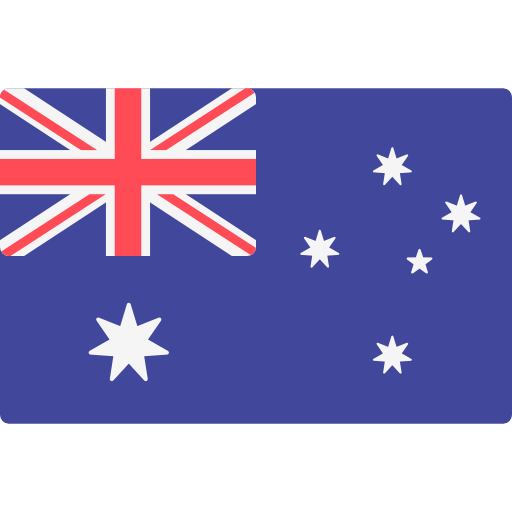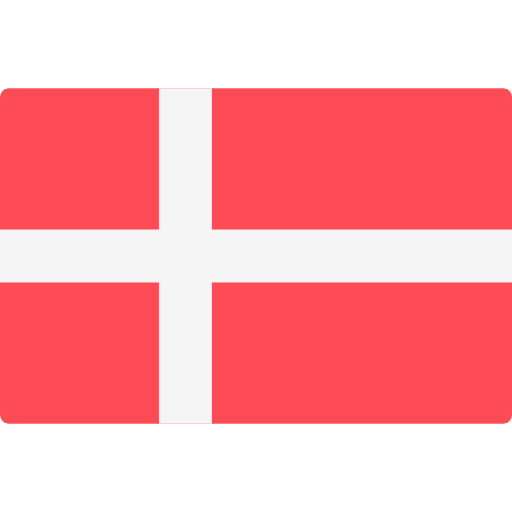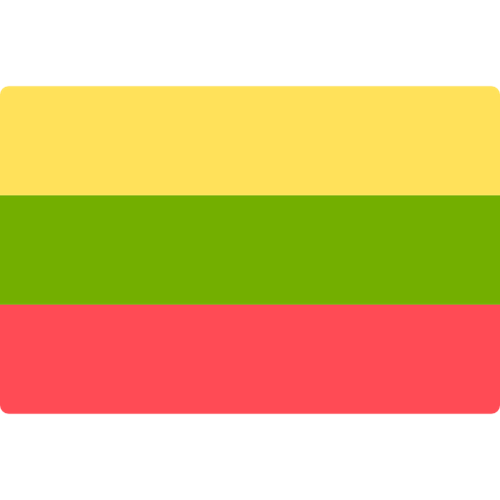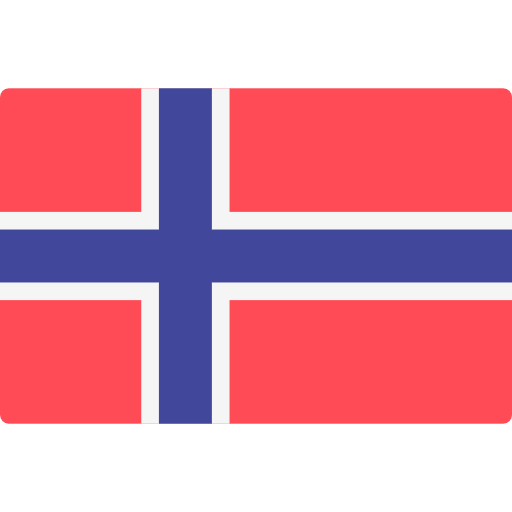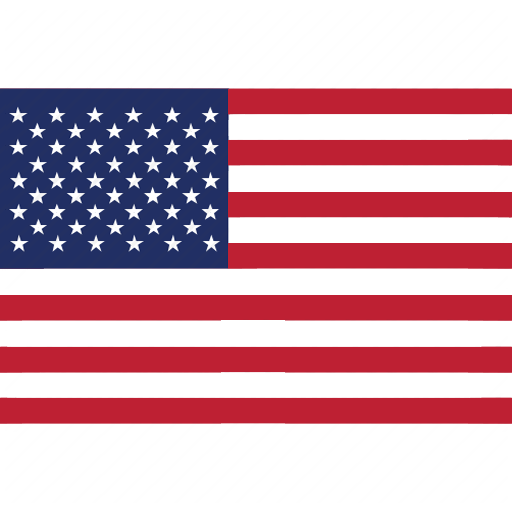Eurofins Toys & Hardlines Monthly Bulletin (January 2025)


New update to Candidate List of Substances of Very High Concern (SVHCs)
On 21 January 2025, ECHA (European Chemicals Agency) released a new Candidate List of SVHCs with the addition of five new substances. The current list of SVHCs now contains 247 substances.
See the table below that indicates the latest substance addition:
|
Nº |
Substance name |
EC number |
CAS number |
Reason for inclusion |
Examples of use(s) |
|
1 |
6-[(C10-C13)-alkyl-(branched, unsaturated)-2,5-dioxopyrrolidin-1-yl]hexanoic acid |
701-118-1 |
2156592-54-8 |
Toxic for reproduction (Article 57c) |
Lubricants, greases, release products and metalworking fluids |
|
2 |
O,O,O-triphenyl phosphorothioate |
209-909-9 |
597-82-0 |
Persistent, bioaccumulative and toxic, PBT |
Lubricants and greases |
|
3 |
Octamethyltrisiloxane |
203-497-4 |
107-51-7 |
Very persistent, very bioaccumulative, vPvB |
Manufacture and/or formulation of: cosmetics, personal/health care products, pharmaceuticals, washing and cleaning products, coating and non-metal surface treatment and sealants and adhesives |
|
4 |
Perfluamine |
206-420-2 |
338-83-0 |
Very persistent, very bioaccumulative, vPvB |
Manufacture of electrical, electronic and optical equipment and machinery and vehicles |
|
5 |
Reaction mass of: triphenylthiophosphate and tertiary butylated phenyl derivatives |
421-820-9 |
192268-65-8 |
Persistent, bioaccumulative and toxic, PBT |
No active registrations |
Additionally, the ECHA (European Chemicals Agency) updated the existing Candidate List of SVHCs for Tris(4-nonylphenyl, branched and linear) phosphite entry. Its endocrine-disrupting properties for the environment are included.
See below a table indicating the update for Tris(4-nonylphenyl, branched and linear) phosphite entry: Legal obligations for companies using SVHC substances include:
|
Nº |
Substance name |
EC number |
CAS number |
Reason for inclusion |
Examples of use(s) |
|
1 |
Tris(4-nonylphenyl, branched and linear) phosphite |
- |
- |
Endocrine disrupting properties (Article 57(f) – environment) |
Polymers, adhesives, sealants and coatings |
Legal obligations for companies using SVHC substances include:
- Suppliers provide customers and consumers with enough information to allow for safe use of products that contain a substance of very high concern (SVHC) above a concentration of 0.1 % (weight by weight)
- Importers and producers of these products must notify the ECHA if their article contains SVHC substances above a concentration of 0.1% weight by weight (w/w) and the substance is present in those products in quantities totalling over 1 tonne per producer or per importer per year. The notifications must be submitted within six months from the date that the substance is included in the list.
- Suppliers of substances on the Candidate List, supplied either on their own or in mixtures, must provide their customers with a safety data sheet.
- Under the Waste Framework Directive (Directive 2008/98/EC on waste- WFD), any supplier of an article containing a substance of very high concern (SVHC) in a concentration above 0.1% weight by weight (w/w) on the EU market is required to submit a SCIP Notification on that article to ECHA, as of 5 January 2021. SCIP is the database holding information on Substances of Concern in articles, as such or in complex objects (products), established under the WFD. The SCIP database complements the existing notification obligations for Candidate List substances in articles subject to REACH regulation and its related communication through the supply chain, according to Articles 7 (2) and 33 respectively.
Click here to refer to the official List on ECHA’s website.
New date of application for European Deforestation Regulation
On 23 December 2024, the European Commission published Regulation (EU) 2024/3234 amending Regulation (EU) 2023/1115 as regards provisions relating to the date of application.
The date of application is postponed allowing third countries, Member States, operators, and traders to be fully prepared to comply with their obligations.
The main amendment dates published, in this regulation, are:
- 30 December 2025: Regulation (EU) 2023/1115 will be applied for large operators and traders.
- 30 June 2026: Regulation (EU) 2023/1115 will be applied for micro- and small enterprises.
- No later than 30 June 2025: The European Commission will publish, and implement acts to determine the list of countries or parts thereof classified as low or high risk.
- 30 December 2025: Regulation (EU) No 995/2010 will be repealed.
Note: Regulation (EU) No 995/2010 shall continue to apply until 31 December 2028 to timber and timber products which were produced before 29 June 2023 and placed on the market from 30 December 2025. The timber and timber products which were produced before 29 June 2023 and placed on the market from 31 December 2028 shall comply with Article 3 of this Regulation.
This Regulation should enter into force as a matter of urgency on 26 December 2024 to ensure that this Regulation enters into force before the initial date of application of Regulation (EU) 2023/1115.
New European regulation on packaging and packaging waste
On 22 January 2025, the European Commission published Regulation (EU) 2025/40 on packaging and packaging waste which amending Regulation (EU) 2019/1020 and Directive (EU) 2019/904, and repealing Directive 94/62/EC.
Its main objective is to promote a circular economy by establishing packaging requirements such as:
- New objectives such as a minimum percentage of recycled content in packaging by 2030-2040, reuse of packaging by 2030 and other objectives for 2040.
- Minimising the quantity of packaging through design, weight and volume and avoiding unnecessary packaging.
- Minimising substances of concern, such as per- and polyfluorinated alkyl substances (PFAS) and bisphenol A, common in food contact materials, are banned.
- Labelling, marking and information requirements to facilitate classification, sorting and choice by consumers.
- New rules introducing restrictions on single-use plastic packaging.
- Harmonising standards across the European Union, removing trade barriers and establishing uniform criteria for packaging design, recyclability, and labelling.
This Regulation shall enter into force on 11 February 2025, and it shall apply from 12 August 2026.
For more information, please refer to the official publication on the European Commission website here.
The EU reasoned opinion to France related to its labelling requirements for waste classification
On 14 November 2024, the European Commission sent a reasoned opinion to France (INFR(2022)4028) for failure to address the incompatibility of its labelling requirements (waste sorting instructions) of the Treaty on the Functioning of the European Union (TFEU).
It calls on France to ensure that its labelling requirements for waste sorting comply with the principle of the free movement of goods.
France has two months to respond and take the necessary measures. Otherwise, the Commission may decide to refer the case to the Court of Justice of the European Union.
For more information, please refer to the official publication on the European Commission website here.
Updates to harmonised standards for GPSD
On 2 December 2024, the European Commission published the Implementing Decision (EU) 2024/2962 amending Implementing Decision (EU) 2019/1698 on European standards for products drafted in support of Directive 2001/95/EC of the European Parliament and of the Council on general product safety.
The following standards are deleted from the list of references of standards related to the General Product Safety Directive 2001/95/EC:
| Reference | Title |
|
EN 581-1:2006 |
Outdoor furniture – Seating and tables for camping, domestic and contract use – Part 1: General safety requirements |
|
EN 12491:2001 |
Paragliding equipment – Emergency parachutes – Safety requirements and test methods |
|
EN 1651:1999 |
Paragliding equipment – Harnesses – Safety requirements and strength tests |
|
EN 1273:2005 |
Child use and care articles – Baby walking frames – Safety requirements and test methods |
European Regulation related to General Product Safety Regulation and cybersecurity
In December 2024, the European Commission published several regulations related to Regulation (EU) 2023/988 on General Product Safety and cybersecurity. Below is a summary table with these relevant publications:
| Date | Title |
|
2 December 2024 |
Commission Implementing Regulation (EU) 2024/2958 of 29 November 2024 determining the output indicators relevant for Regulation (EU) 2023/988 of the European Parliament and of the Council on general product safety |
|
13 December 2024 |
Commission Delegated Regulation (EU) 2024/3173 of 27 August 2024 supplementing Regulation (EU) 2023/988 supplementing Regulation (EU) 2023/988 of the European Parliament and of the Council with regard to rules on access to and operation of the Safety Gate Rapid Alert System, information to be entered in that System, notification requirements and the criteria for assessment of the level of risk |
|
19 December 2024 |
Commission Implementing Regulation (EU) 2024/3143 of 18 December 2024 establishing the circumstances, formats and procedures for notifications pursuant to Article 61(5) of Regulation (EU) 2019/881 of the European Parliament and of the Council on ENISA (the European Union Agency for Cybersecurity) and on information and communications technology cybersecurity certification |
Status of European initiatives
Below is a summary table with the status of current European initiatives related to consumer products:
| Published initiative | Status |
|
Product safety – indicators for reporting on the General Product Safety Regulation This initiative will set out the indicators for Member States to report on the application of the General Product Safety Regulation. |
It was adopted by the European Commission on 29 November 2024. |
|
Hazardous substances in electrical and electronic equipment – list of restricted substances (update) This initiative proposed adding tetrabromobisphenol A (TBBP-A) and medium-chain chlorinated paraffins (MCCPs) to the list of restricted substances in electrical and electronic equipment.
|
On 10 December 2024, this initiative was abandoned. These substances will not be added to the restricted substance list. |
|
Batteries – labelling (new rules) Its aim is to help businesses ensure a common look and feel to meet the various labelling requirements applicable to batteries that are placed on the single market.
|
Begin the preparation process of this initiative on 12 December 2024. Its adoption is planned for the second quarter of 2025. |
|
Forest protection – information system to support EU rules on ‘deforestation-free’ products The Regulation provides for an information system that will contain due diligence statements submitted by businesses. These statements demonstrate that the products that businesses intend to sell in the EU or export comply with the new rules.
|
On 4 December 2024, this initiative was adopted by the Commission. |
|
Digital product passport – rules for service providers The aim is to adopt a delegated act laying down rules on the operation of digital product passport (DPP) service providers.
|
The call for evidence was closed on 10 December 2024 and the public consultation is upcoming. |
The table below summarises the most recent standard updates and upcoming dates of withdrawal (non-exhaustive):
(*) Date of withdrawal: The latest date by which national standards conflicting with a European Norm (EN) (and Harmonisation Document (HD) for the European Committee for Electrotechnical Standardisation (CENELEC)) must be withdrawn.
|
The European Committee for Standardisation (CEN)/CENELEC |
|||
|
Reference |
Title |
Date of withdrawal (*) |
Supersedes |
| EN 71-3:2019+ A2:2024 | Safety of toys - Part 3: Migration of certain elements | 4 December 2024 | EN 71-3:2019+A1:2021/prA2 EN 71-3:2019+A1:2021 |
| EN 71-13:2021+A2:2024 | Safety of toys - Part 13: Olfactory board games, cosmetic kits and gustative games | 31 May 2025 | EN 71-13:2021+A1:2022/prA2 EN 71-13:2021+A1:2022 |
| EN 71-16:2025 | Safety of toys – Part 16: Certain chlorinated phosphorus flame retardants (TCEP, TCPP, TDCP) in toy materials | 31 August 2025 | - |
| EN 71-17:2025 | Safety of toys – Part 17: Certain isothiazolinones (MIT, CIT, BIT) in aqueous toy materials | 31 August 2025 | - |
| EN 71-18:2024 |
Safety of toys - Part 18: Phenol in aqueous (content) and polymeric (migration) toy materials | 30 June 2025 | - |
| EN 71-19:2024 |
Safety of toys - Part 19: Migration of bisphenol A from toy materials | 30 June 2025 | - |
Update to the toys guidance document Nº 20
On 21 November 2024, the European Commission published the Revised Guidance Document No. 20 on decorative products and products for collectors.
The aim of this guidance document is to help Member States and stakeholders in making the distinction between toys and other consumer products. In this version, new examples and pictures have been added.
This guidance document is available on the European Commission website here.
The table below summarises the most recent standard updates and upcoming dates of withdrawal (non-exhaustive):
(*) Date of withdrawal: The latest date by which national standards conflicting with a European Norm (EN) (and Harmonisation Document (HD) for the European Committee for Electrotechnical Standardisation (CENELEC)) must be withdrawn.
(**) Date of announcement: The latest date by which the existence of an EN (and HD for CENELEC), a TS or a CWA must be announced at the national level.
|
The European Committee for Standardisation (CEN)/CENELEC |
|||
|
Reference |
Title |
Date of withdrawal (*) |
Supersedes |
|
Paints and varnishes - Evaluation of quantity and size of defects, and of intensity of uniform changes in appearance - Part 3: Assessment of degree of rusting (ISO 4628-3:2024) |
31 May 2025 |
|
|
|
Steel for packaging - Flat steel products intended for use in contact with foodstuffs, products and beverages for human and animal consumption – Tin-coated steel (tinplate) |
31 May 2025 |
||
|
|
Steel for packaging - Flat steel products intended for use in contact with foodstuffs, products and beverages for human and animal consumption - Non-coated steel (black plate) |
|
|
|
Furniture - Safety, strength and durability - Requirements for domestic seating |
31 May 2025 |
||
|
Furniture removal activities - Furniture removal for private individuals - Service specification |
30 June 2025 |
||
|
Wood flooring - Solid parquet elements with grooves and/or tongues |
30 June 2025 |
||
|
Ambient air - Standard method for the measurement of the concentration of nitrogen dioxide and nitrogen monoxide by chemiluminescence |
30 June 2025 |
||
|
Stationary source emissions - Determination of the total emission of As, Cd, Cr, Co, Cu, Mn, Ni, Pb, Sb, Tl and V |
30 June 2025 |
||
|
Textile floor coverings - Classification of carpet underlays |
31 May 2025 |
||
|
|
Ambient air - Standard method for the measurement of the concentration of carbon monoxide by non-dispersive infrared spectroscopy |
30 June 2025 |
|
|
Resilient floor coverings - Determination of seam strength (ISO 16906:2015) |
30 April 2025 |
||
|
Paints and varnishes - Determination of the film thickness of coatings using an ultrasonic gauge (ISO 19397:2024) |
31 May 2025 |
||
|
Paints and varnishes - Wettability - Part 6: Measurement of dynamic advancing and receding angle by changing the volume of a drop (ISO 19403‑6:2024) |
30 April 2025 |
||
|
Paints and varnishes - Wettability - Part 7: Measurement of the dynamic contact angles and the roll-off angle on a tilt stage (ISO 19403-7:2024) |
30 April 2025 |
||
|
Floating leisure articles for use on and in the water - Part 1: Classification, materials, general requirements and test methods (ISO 25649-1:2024) |
31 May 2025 |
||
|
Floating leisure articles for use on and in the water - Part 2: Consumer information (ISO 25649-2:2024) |
31 May 2025 |
||
|
Floating leisure articles for use on and in the water - Part 3: Additional specific safety requirements and test methods for Class A devices (ISO 25649-3:2024) |
31 May 2025 |
||
|
Floating leisure articles for use on and in the water - Part 4: Additional specific safety requirements and test methods for Class B devices (ISO 25649-4:2024) |
31 May 2025 |
||
|
Floating leisure articles for use on and in the water - Part 5: Additional specific safety requirements and test methods for Class C devices (ISO 25649-5:2024) |
31 May 2025 |
||
|
Floating leisure articles for use on and in the water - Part 6: Additional specific safety requirements and test methods for Class D devices (ISO 25649-6:2024) |
31 May 2025 |
||
|
Floating leisure articles for use on and in the water - Part 7: Additional specific safety requirements and test methods for Class E devices (ISO 25649-7:2024) |
31 May 2025 |
||
|
Reference |
Title |
Date of Announcement |
Supersedes |
|
High chairs and learning towers - Compiled interpretations of CEN/TC 364 standards |
4 December 2024 |
- |
|
New legislation for packaging and packaging waste
On 11 December 2024, the Producer Responsibility Obligations (Packaging and Packaging Waste) Regulations 2024, S.I. 2024 No 1332, was published.
These Regulations define, amongst other points, the producer’s responsibility obligations. They require producers of packaging, who are established in the UK, to register to pay annual fees, to collect, and report data about their packaging and to assess the recyclability of the packaging they supply.
They also establish a scheme administrator to administer the provisions on disposal costs and to distribute amounts collected from producers. They also regulate compliance schemes which perform obligations on behalf of producers who are scheme members, and reprocessors and exporters of packaging waste.
Updates in the guidance for consumer products
In December 2024, the Office for Product Safety and Standards published several updates related to guidance on consumer products.
One of the updates can be found in the Product safety for businesses: A to Z of industry guidance. The page has been updated to reflect the introduction of new general product safety regulations in Northern Ireland, with other minor amendments.
The other is the Safety and security requirements on imports and exports guidance. Information about qualifying and non-qualifying goods arriving in Great Britain (England, Scotland and Wales) has been updated.
These guides set out how to meet the safety and security requirements for imports, exports, distribute or sell products in Great Britain and Northern Ireland.
OEHHA finalises changes to Prop 65 Short-Form Warning Regulations
On 6 December 2024, the California Office of Environmental Health Hazard Assessment (OEHHA) published amendments to Proposition 65 (Prop 65) Article 6 “Clear and Reasonable Warnings” regulations for “short-form” warnings. Approved by the Office of Administrative Law (OAL) on 26 November 2024, these amendments will take effect on 1 January 2025.
Key revisions
- Chemical Name Inclusion
The amendments require businesses to include at least one chemical name for each applicable endpoint (cancer and/or reproductive toxicity) in short-form warnings. This change promotes transparency for consumers by identifying the specific substances triggering the warning. - Transition Period
Businesses have until the 1st of January 2028, to transition to the updated short-form warning requirements. This extended timeline allows sufficient time for label updates and compliance planning. - Unlimited Sell-Through Allowance
Products labelled with the existing short-form warnings before or during the transition period may continue to be sold indefinitely without the need for relabelling, ensuring minimal disruption to existing inventory. - Flexibility in Label Size and Warning Methods
Label size restrictions for short-form warnings have been removed. Businesses can now apply short-form warnings to any label size, provided the text remains in at least 6-point font and is conspicuous. - Internet and Catalogue Warnings
Retailers must ensure Proposition 65 warnings for online sales are accessible both prior to purchase and before product exposure. A 60-day grace period allows for updates to online warnings upon receiving revised content from manufacturers. - Tailored Warnings
New tailored safe harbour warnings have been introduced for specific product categories, such as vehicle and recreational marine vessel parts, offering businesses compliance flexibility and clarity for these specialised products.
Resources and next steps
The OEHHA announcement as well as the final rule can be reviewed here.
Manufacturers, brands, and retailers are strongly encouraged to review these regulatory updates, evaluate their product lines, and begin implementing necessary changes within the transition period.
EPA amends TSCA Rules for Deca-BDE and PIP(3:1)
On November 19, 2024, the US Environmental Protection Agency (EPA) published a final rule in the Federal Register to amend Subpart E of 40 CFR 751, related to the persistent, bioaccumulative, and toxic (PBT) chemicals regulations under Section 6 of the Toxic Substances Control Act (TSCA).
The final rule makes revisions to the rules for Deca-BDE and PIP(3:1) and will come into effect on 21 January 2025. Please see table below for a summary of the key revisions.
| Substance | Revisions |
|
Deca-BDE |
|
|
PIP(3:1) |
|
New York passes rule to require ingredient labelling for diapers
On 11 December 2024, the State of New York approved S2279C which requires diapers to be labelled with its ingredients in the order of predominance. The ingredients list must be on the diaper box or package, and shall either be printed on the package or affixed thereto. Manufacturers will have twelve months to comply after the effective date of the new law.
Under the new rule, a “diaper” is defined as “a type of garment or product inserted into a garment for the purpose of absorbing waste products to prevent soiling of outer clothing or the external environment without the use of a toilet. These products may be either disposable or reusable.”
Below, you will find a monthly table summarising product recalls and alerts in Europe (Source” Safety Gate (RAPEX)” and “RASFF”) and the U.S. (Source “CPSC”).
Safety Gate (RAPEX) (European Commission Rapid Alert System for dangerous non-food products – Alerts reported by EU national authorities).
The following 107 alerts regarding toys, childcare articles and children's equipment products were reported between week 47 and week 50 of 2024.
|
Type of Risk |
Number of alerts |
Notes |
|
|
|
Ride-on toy The printed circuit board can easily detach, which may cause the product to overheat and components to melt during use. The child or bystanders can suffer burns. The product does not comply with the requirements of the Toy Safety Directive or EN 62115. |
|
1 |
Fancy-dress costume The fabric ribbon forming a bow on the hat is highly flammable and the flame propagation is too high on the white textile of the dress. The costume may catch fire if worn close to an ignition source, resulting in burns. The product does not comply with the requirements of the Toy Safety Directive or EN 71-2. |
|
|
Chemical
|
12 |
Toy slime The migration of boron from the toy slime is too high. The product does not comply with the requirements of the Toy Safety Directive or EN 71-3.
|
|
1 |
Finger paints The migration of aluminium from the toy is too high. The product does not comply with the requirements of the Toy Safety Directive or EN 71-3 and EN 71-7. |
|
|
1 |
Finger paints The white, blue, red and black paintings have an excessive concentration of methylisothiazolinone. The product does not comply with the requirements of the Toy Safety Directive or EN 71-3 and EN 71-7. |
|
|
1 |
Toy stamps The rubber part of the stamp contains an excessive amount of bis(2-ethylhexyl) phthalate (DEHP). The product does not comply with the REACH Regulation. |
|
|
1 |
Plastic toy The doll has an excessive concentration of dibutyl phthalate (DBP) and diisobutyl phthalate (DIBP). The product does not comply with the REACH Regulation. |
|
|
7 |
Plastic doll The doll has an excessive concentration of bis(2-ethylhexyl) phthalate (DEHP) and dibutyl phthalate (DBP). The product does not comply with the REACH Regulation. |
|
|
Chemical, Choking |
1 |
Keyring with soft toy The toy has small parts (ring, carabiner clasp and bell). The seam allows access to the stuffing material. The product does not comply with the requirements of the Toy Safety Directive or EN 71-1. |
|
1 |
Fancy-dress hairband The battery compartment can be easily opened, leaving the batteries accessible. The product does not comply with the requirements of the Toy Safety Directive or EN 71-1. |
|
|
1 |
Plastic toy The battery compartment can be easily opened without the aid of a tool, leaving button batteries accessible. The product does not comply with the requirements of the Toy Safety Directive or EN 62115. |
|
|
1 |
Toy wands The handle of the wand can easily break, making the button batteries inside accessible. The product does not comply with the requirements of the Toy Safety Directive or EN 62115. |
|
|
Chemical, Choking, Damage to sight |
1 |
Toy torch light The battery compartment can be easily opened, leaving the button batteries accessible. The beam intensity of the white LED is too powerful. The product does not comply with the requirements of the Toy Safety Directive or EN 71-1, EN 71-2, EN 71-3 and EN 62115. |
|
5 |
Baby book The product has small parts. The product does not comply with the requirements of the Toy Safety Directive or EN 71-1. |
|
|
3 |
Bath toy The product has small parts. The product does not comply with the requirements of the Toy Safety Directive or EN 71-1. |
|
|
1 |
Indoor swing seat The product has small parts. The product does not comply with the requirements of the Toy Safety Directive or EN 71-1. |
|
|
2 |
Playmat The product has small parts. The product does not comply with the requirements of the Toy Safety Directive or EN 71-1. |
|
|
1 |
Plush toy The fibrous stuffing material of the toy is easily accessible due to the weakness of certain seams. The product does not comply with the requirements of the Toy Safety Directive or EN 71-1. |
|
|
1 |
Push-along toy Small parts can easily detach. The product does not comply with the requirements of the Toy Safety Directive or EN 71-1. |
|
|
1 |
Ribbon toy The wooden part of the product has a protruding part that can get stuck in the mouth. The product does not comply with the requirements of the Toy Safety Directive or EN 71-1. |
|
|
1 |
Set of toy cars The product has a small part. The product does not comply with the requirements of the Toy Safety Directive or EN 71-1. |
|
|
9 |
Soft toy The fibrous stuffing material of the toy is easily accessible. The product does not comply with the requirements of the Toy Safety Directive or EN 71-1. |
|
|
1 |
Swing Small parts can easily detach (the hook on the buckle fastener and the adjustment clip on the seat strap). The product does not comply with the requirements of the Toy Safety Directive or EN 71-1. |
|
|
2 |
Teething necklace The necklace can easily break, resulting in small parts (the beads). The product does not comply with the requirements of the General Product Safety Directive or EN 71-1. |
|
|
1 |
Teether The toy has a protruding part that can get stuck in the mouth of a small child. The product does not comply with the requirements of the Toy Safety Directive or EN 71-1. |
|
|
1 |
Toy maracas The toy has protruding parts (small parts). The product does not comply with the requirements of the Toy Safety Directive or EN 71-1. |
|
|
1 |
Toy rattle The toy has a protruding part that can get stuck in the mouth of a small child. The product does not comply with the requirements of the Toy Safety Directive or EN 71-1. |
|
|
1 |
Toy dog The collar of the toy dog can easily break, resulting in small parts (the collar bell). The product does not comply with the requirements of the Toy Safety Directive or EN 71-1. |
|
|
6 |
Plastic toy Small parts can easily detach. The product does not comply with the requirements of the Toy Safety Directive or EN 71-1. |
|
| Choking, Entrapment |
1 |
Soother holder The garment fastener of the soother holder can easily break, resulting in small parts. The product does not comply with the requirements of the General Product Safety Directive or EN 12586. |
|
Choking, Injuries |
1 |
Swing Small plastic sheets can easily detach from the ends of the ropes. Moreover, the swing is not stable due to the distance between the lowest part and the upper part of the sitting area. The product does not comply with the requirements of the Toy Safety Directive or EN 71-1 and EN 71-8. |
| 1 |
Swing The rope is too thin and can break, causing a child to fall. Fragments of the female closures of the safety harnesses can become detached, releasing small parts. The product does not comply with the requirements of the Toy Safety Directive or EN 71-8. |
|
| Choking, Injuries, Strangulation | 1 |
Soft toy Small parts can easily detach (eyes, nose, suction cup). In addition, the product bears a too-long cord that can become trapped during various activities of a child. The product does not comply with the requirements of the Toy Safety Directive or EN 71-1. |
| Choking, Strangulation |
1 |
Soother holder The clothing fastener device of the soother can easily break, resulting in small parts. Moreover, the soother holder and its double-strand part are too long. The product does not comply with the requirements of the General Product Safety Directive or EN 12586. |
| Cuts, Entrapment, Injuries, Strangulation |
1 |
Children's cot The cot has sharp accessible edges on a plastic cover on the upper edge of the moving side. There are also accessible gaps on the moving side of the cot. In addition, the locking system on the movable side does not meet the requirements in the lowest position. The product does not comply with the requirements of the General Product Safety Directive or EN 716-1. |
|
Damage to sight |
1 |
Toy projector The laser beam is too powerful, and the product is not adequately labelled. The product does not comply with the requirements of the Toy Safety Directive or EN 60825-1 and EN 62115. |
|
Entrapment |
1 |
Children's highchair There is a space between the foldable table and the leg separator of the highchair. The product does not comply with the requirements of the General Product Safety Directive or EN 14988. |
|
Entrapment, Injuries, Strangulation |
3 |
Children's cot The strength of the locking system of the movable side panel is insufficient. In addition, the distance between the footholds and the top of the cot is not sufficient. The columns on the side of the bed can easily break, resulting in wider gaps where the limbs or head of the child can get entrapped. The product does not comply with the requirements of the General Product Safety Directive or EN 716-1. |
|
Entrapment, Injuries, Suffocation |
1 |
Children´s cot The distance between the slats of the cot base is too big. There are holes that are located between the slats of the cot bed. The product does not comply with the requirements of the General Product Safety Directive or EN 716-1. |
|
1 |
Children's highchair The product has only a crotch restraint on the belt, not between the seat and the bar. In addition, the highchair is not sufficiently stable and may tip over while the child is seated. The product does not comply with the requirements of the General Product Safety Directive or EN 14988. |
|
|
Environment |
1 |
Toy mobile phone The solders in the product have excessive concentrations of lead and cadmium. The product does not comply with the requirements of the Directive on the restriction of the use of certain hazardous substances in electrical and electronic equipment (RoHS 2 Directive). |
|
Injuries |
1 |
Baby walker The strength of the baby walker is inadequate and there is no proper protection against falls from stairs. The product does not comply with the requirements of the General Product Safety Directive or EN 1273. |
|
1 |
Children's cot The distance between the footholds and the top of the cot sides and ends is too small. The product does not comply with the requirements of the General Product Safety Directive or EN 716-1. |
|
|
7 |
Children's highchair The highchair is not sufficiently stable and can easily tip over and the highchair lacks an active restraint system. The product does not comply with the requirements of the General Product Safety Directive or EN 14988. |
|
|
1 |
Children's table and chair set The chair in the product can easily break, causing the user to fall- Moreover, the chair has sharp edges and corners on the back, seat, and legs. The product does not comply with the requirements of the General Product Safety Directive or EN 17191. |
|
|
1 |
Highchair The highchair is not sufficiently stable and can easily tip over. The product does not comply with the requirements of the General Product Safety Directive or EN 14988. |
|
|
1 |
Plastic swing seat The product has accessible openings and holes, in which children can become trapped. The product does not comply with the requirements of the Toy Safety Directive or EN 71-8. |
|
|
1 |
Pushchair The parking brake of the pushchair does not work adequately. The product does not comply with the requirements of the General Product Safety Directive or EN 1888. |
|
|
1 |
Swing The swing is not sufficiently resistant to load. The product does not comply with the requirements of the Toy Safety Directive or EN 71-8. |
|
|
1 |
Toy scooter The steering tube fixing mechanism is not sufficiently stable. The wheels are too small and could get stuck in holes in the ground. The product does not comply with the requirements of the Toy Safety Directive or EN 71-1. |
|
|
Injuries, Strangulation |
2 |
Children's cot The snag points of the cot are protruding. Cords (from clothing or a soother holder) could get entangled around the snag point. Moreover, the slats may become detached and create an opening. The product does not comply with the requirements of the General Product Safety Directive or EN 716-1. |
|
1 |
Climbing tower with a slide The slide/climbing board is secured only by insertion in a stabiliser bar. Moreover, a child can climb on the rung/ladder and slip through the rungs with both legs. The product does not comply with the requirements of the Toy Safety Directive or EN 71-1 and EN 71-8. |
|
|
1 |
Children's slide A child can climb to the basketball hoop and fall through. Moreover, a child's head can be caught in the basketball hoop. The product does not comply with the requirements of the Toy Safety Directive or EN 71-1 and EN 71-8. |
|
|
Strangulation |
1 |
Toy camera The toy has a long strap to carry it around the neck. This strap can become trapped in the neck area during various activities of a child. The product does not comply with the requirements of the Toy Safety Directive or EN 71-1. |
|
1 |
Children's fancy dress The product has long functional cords in the neck area. The product does not comply with the requirements of the Toy Safety Directive or EN 14682. |
|
|
1 |
Fancy dress costume The product has non-detachable functional cords in the neck area, in which a child can become trapped during various activities. The product does not comply with the requirements of the Toy Safety Directive or EN 71-1. |
|
|
1 |
Swing The swing has openings that can cause the child to fall, and the head can be trapped in them. The product does not comply with the requirements of the Toy Safety Directive or EN 71-8. |
|
|
1 |
Children's hat The product bears cords with free ends in the neck area. These drawstrings can become trapped during various activities of a child. The product does not comply with the requirements of the General Product Safety Directive or EN 14682. |
|
|
1 |
Soother holder The soother holder is too long, which may lead to strangulation of a child. The product does not comply with the requirements of the General Product Safety Directive or EN 12586. |
|
|
Strangulation, Suffocation |
1 |
Sensory swing The flexible cloth of the swing can easily form a loop. A child can have its head entangled in the flexible material. If a child's head is stuck inside the swing, they might not be able to breathe. The product does not comply with the requirements of the Toy Safety Directive or EN 71-1 and EN 71-8. |
The following 8 alerts regarding furniture were reported between week 47 and week 50 of 2024.
|
Type of Risk |
Number of alerts |
Notes |
|
|
|
Folding chair The product is unstable and can deform, causing the user to fall. The product does not comply with the requirements of the General Product Safety Directive or EN 17191. |
|
Injuries |
1 |
Office chair Due to insufficient mechanical stability and strength, the chair can tip over during its use or the backrest can break. The product does not comply with the requirements of the General Product Safety Directive or EN 1335-2. |
|
1 |
Bed The bed has sharp edges. Moreover, the support bar may crack and pull out. The product does not comply with the requirements of the General Product Safety Directive or EN 1725. |
|
|
1 |
Chair Due to the incorrect design of the chair, the user can fall. The product does not comply with the requirements of the General Product Safety Directive or EN 12520. |
|
|
1 |
Folding chair The front edge of the chair may break, while the user sits on the chair. The product does not comply with the requirements of the General Product Safety Directive or EN 1728, EN 1022 and EN 12520. |
|
|
1 |
Step stool The step and landing areas of the product are inadequate. The Upper surfaces of the steps are not slip-resistant. It may cause the user to fall. The product does not comply with the requirements of the General Product Safety Directive or EN 14183. |
|
|
1 |
Table The table can easily collapse under heavy weight. The product does not comply with the requirements of the General Product Safety Directive or EN 581-1 and EN 581-3. |
The following 25 alerts regarding jewellery were reported between week 47 and week 50 of 2024.
|
Type of Risk |
Number of alerts |
Notes |
|
Chemicals |
4 |
Bracelet The metal in the bracelet has an excessive concentration of cadmium. The product does not comply with the REACH Regulation. |
|
3 |
Brooches set The metal in the brooch has an excessive concentration of cadmium and lead. The product does not comply with the REACH Regulation. |
|
|
4 |
Earrings The metal in the earring has an excessive concentration of cadmium and lead. The product does not comply with the REACH Regulation. |
|
|
5 |
Necklace The metal in the necklace has an excessive concentration of cadmium and lead. The product does not comply with the REACH Regulation. |
|
|
1 |
Piercing jewellery The rate of nickel release is too high. The product does not comply with the REACH Regulation. |
|
|
3 |
Rings The metal in the rings has an excessive concentration of cadmium. The product does not comply with the REACH Regulation. |
|
|
5 |
Jewellery set The metal in the jewellery has an excessive concentration of cadmium. The product does not comply with the REACH Regulation. |
The following 15 alerts regarding miscellaneous consumer products were reported between week 47 and week 50 of 2024.
|
Type of Risk |
Number of alerts |
Notes |
|
Burns |
1 |
Mugs The kiln is not being fully fired. This causes the base of the mug to crack leading to leakage and burns to the user. The product does not comply with the requirements of the General Product Safety Directive. |
|
Chemical |
1 |
Dumbbell The plastic material of the product has an excessive concentration of bis(2-ethylhexyl) phthalate (DEHP). The product does not comply with the REACH Regulation. |
|
1 |
Toiletry bag The plastic material of the product has an excessive concentration of bis(2-ethylhexyl) phthalate (DEHP). The product does not comply with the REACH Regulation. |
|
|
1 |
Napkin ring The plastic material of the handle has an excessive amount of bis(2-ethylhexyl) phthalate (DEHP) and dibutyl phthalate (DBP). The product does not comply with the REACH Regulation. |
|
|
1 |
Mobile phone armband The plastic of the product has an excessive concentration of polycyclic aromatic hydrocarbons (PAHs). The product does not comply with the REACH Regulation. |
|
|
Chemical, Environment |
1 |
Soft sport plastic The plastic material of the product has an excessive concentration of bis(2-ethylhexyl) phthalate (DEHP). The product does not comply with the REACH Regulation. |
|
Drowning |
4 |
Inflatable swim seat The product may resemble a toy; however, there is a risk of drowning if children play with it unsupervised. Floating seats must be used under constant adult supervision. The product does not comply with the requirements of the General Product Safety Directive or EN 13138-3. |
|
Environment
|
1 |
Christmas decoration The solders in the product have an excessive concentration of lead. The product does not comply with the requirements of the Directive on the restriction of the use of certain hazardous substances in electrical and electronic equipment (RoHS 2 Directive). |
|
1 |
Disco lamp The plastic material of the cable has excessive concentrations of bis(2-ethylhexyl) phthalate (DEHP), lead and short-chain chlorinated paraffins (SCCPs). The product does not comply with the requirements of the Directive on the restriction of the use of certain hazardous substances in electrical and electronic equipment (RoHS 2 Directive) or the Persistent Organic Pollutants (POP) Regulation. |
|
|
1 |
Cake server The solders in the product have an excessive concentration of lead. The product does not comply with the requirements of the Directive on the restriction of the use of certain hazardous substances in electrical and electronic equipment (RoHS 2 Directive). |
|
|
1 |
Decorative item The solders in the product have an excessive concentration of cadmium and lead. The product does not comply with the requirements of the Directive on the restriction of the use of certain hazardous substances in electrical and electronic equipment (RoHS 2 Directive). |
|
|
Injuries |
1 |
Ratchet strap The strap may give way at less than its permissible load capacity. The product does not comply with the requirements of the General Product Safety Directive or EN 12195-2. |
RASFF (European Commission Rapid Alert System for Food and Feed - Alerts reported by EU national authorities).
The following 5 alerts regarding Food Contact Materials related to children's tableware were reported from 21 November 2024 to 20 December 2024.
|
Product |
Notes |
|
|
Tableware |
Incorrect documentation of tableware. Does not comply with the declarations and analyses included in REGULATION (EU) No 284/2011 and EU Regulation 10/2011. |
|
|
Melamine dinner set |
Migration of melamine from melamine dinner set. |
|
|
Melamine plate |
Poor stability of the material in the melamine plate. |
|
|
Tableware |
Absence of declaration and laboratory report for the consignment of ceramic and plastic food contact materials. |
|
|
Water bottles |
The Declaration of Conformity states that the bottle is made of PCTG material with CAS number l038843-64-9, which is not recognised under Regulation l0/20ll. Conflicting information on the type of plastic is given. The documents PP number 5 and on the bottle mentioned other number 7, which is another type of plastic. On the storage box mentioned LDPE and in the AD PP. Absent or non-complain Declaration of conformity for all types of FCM in consignment. Rejected all consignment. |
|
OPSS issues Product Safety Alerts for the UK market.
The following 12 alerts regarding toys, childcare articles and children's equipment products were reported between week 47 and week 50 of 2024.
|
Type of Risk |
Number of alerts |
Notes |
|
Chemical, choking |
1 |
Slime It contains excess concentrations of boron. Additionally, parts of the slime detached easily, and a hard ‘small ball’ was present as a removable component. Both the slime and small ball can be put in mouths. Some of the required documentation and markings were not present. The product does not meet the requirements of the Toys (Safety) Regulations 2011. |
|
1 |
Plush Toy The plastic suction cup attachment was found to contain bis(2-ethylhexyl) phthalate (DEHP) and dibutyl phthalate (DBP) at 4.6% and 15.6% respectively. Additionally, the seam came apart allowing access to the internal fibrous stuffing material. The suction cup also detached from the plush and was able to fit entirely through the template. There is no labelling and some of the required markings were not present. The product does not meet the requirements of the Toys (Safety) Regulations 2011 or the REACH Regulations 2008. |
|
|
Choking |
1 |
Hairband The lid of the battery box is not securely fastened. The batteries are easily accessible, by a young child. The product does not meet the requirements of the Toys (Safety) Regulations 2011. |
|
1 |
Plush Bag It has been identified that the zip puller can become detached from the bags, producing a small part. The small part may be placed in the mouth and swallowed, which could lead to a young child ingesting the zip or choking. The products do not meet the requirements of the Toys (Safety) Regulations 2011. |
|
|
1 |
Child Appealing Christmas Cushion It has been identified that the red pom poms can easily detach and form a small part capable of fitting inside of a small parts cylinder. The product is deemed to be child-appealing therefore, if the child were to pull on the pom pom and cause it to detach, the child may place the small part in their mouth. The product does not meet the requirements of the Toys (Safety) Regulations 2011. |
|
|
Injuries and choking |
1 |
Magnetic Reusable Water Balloons When tested, the product broke apart when minimal force was applied, allowing access to the magnets. These magnets were found to have a magnetic flux index greater than the maximum permissible level. The product also requires improvement in marking, labelling and documentation. The product does not meet the requirements of the Toys (Safety) Regulations 2011. |
|
Injuries |
1 |
Bedside crib It was found to overturn at less than 30N in the rocking configuration. The product also requires improvement in marking, labelling and documentation. The product does not meet the requirements of the General Product Safety Regulations 2005. |
|
3 |
Swimming Float The product presents a serious risk of injuries as if a baby is placed in the swim float with the canopy attached, a gust of wind could catch under the canopy and lift the swim float off the water. This product does not meet the requirements of the General Product Safety Regulations 2005. |
|
|
1 |
Baby Carrier A fault with the shoulder strap attachment to the body panel has been identified. It is possible for the webbing to fray or come away from the carrier’s body, which could result in the baby falling from the carrier unexpectedly. The affected products do not meet the requirements of the General Product Safety Regulations 2005.
|
|
|
Suffocation, strangulation |
1 |
Bed Rail Bumpers The product has the possibility of entrapment between the product and the cot side/cot mattress. The product also has attachment straps or the child burrowing between the product and mattress. If a child under three years old is placed on their bed in between the product and were to move their face up against the inflatable product or gets trapped between the two, they may no longer be able to move or breathe. The product does not meet the requirements of the General Product Safety Regulations 2005. |
The following 11 alerts regarding miscellaneous consumer products were reported between week 47 and week 50 of 2024.
|
Type of Risk |
Number of alerts |
Notes |
|
Burns |
1 |
Ceramic mug and sock gift set The base of the ceramic mug can crack and separate whilst in use, resulting in potentially hot contents spilling. The product does not meet the requirements of the General Product Safety Regulations 2005. |
|
1 |
Candles The wax is capable of overheating causing the glass to break or the wax oil to burn or leak. The product does not meet the requirements of the General Product Safety Regulations 2005. |
|
|
Choking |
5 |
Christmas Decoration It has small parts (e.g. the sprinkles) that can easily detach from the decoration. The sprinkles can easily be mistaken for food and may cause a person to choke if placed in the mouth. The product does not meet the requirements of the Food Imitations (Safety) Regulations 1989 or the General Product Safety Regulations 2005. |
|
Cuts |
1 |
Box cutters Its ease of use and child-appealing design could result in a young child using the cutter whilst unattended and receiving lacerations. The products do not meet the requirements of the General Product Safety Regulations 2005. |
|
Fire |
1 |
Christmas House Scene Tea Light Holder The position of the tea light holder is situated directly under the overhanging roof of one of the houses. After extended or frequent use, the wooden house decoration may ignite and cause a fire. This product does not meet the requirements of the General Product Safety Regulations 2005. |
|
Injuries |
1 |
Telescopic ladders The locking mechanism on the rungs can fail, potentially resulting in the user falling unexpectedly. When unlocking and sliding the ladder up, the ladder may also pose a risk of crushing the user’s hands as under the weight of the upper sections, the ladder falls in an uncontrolled manner. The markings and users’ instructions do not state the ladder’s class and some of the other required documentation was not present. The product does not meet the requirements of the General Product Safety Regulations 2005. |
|
1 |
Children’s bicycle The cranks on the affected models can fatigue and break during use, which could result in the user falling from the bike and injuring themselves. The products do not meet the requirements of the General Product Safety Regulations 2005. |
From 5 December 2024 to 19 December 2024, the CPSC (Consumer Product Safety Commission) published the following recalls:
1 recall regarding toys and childcare products
|
Hazard |
Number of alerts |
Notes |
|
Ingestion |
1 |
Magnetic building sticks The recalled magnetic building sticks set violates the mandatory federal regulation for magnet toys posing an ingestion hazard. When high-powered magnets are swallowed, the ingested magnets can attract each other, or another metal object, and become lodged in the digestive system. This can result in perforations, twisting and/or blockage of the intestines, infection, blood poisoning and death. |
4 recalls of consumer products
|
Type of Risk |
Number of alerts |
Notes |
|
Fire and laceration |
1 |
Scented candles The flame can burn too high and cause the glass container to break, posing fire and laceration hazards. |
|
Serious injury and death |
1 |
Gun safes The mechanical internal locking plates can fail to align and allow unauthorized users to open the gun safes, posing a serious injury hazard and risk of death. |
|
Injury |
1 |
Bed crowns The welded metal tabs used to mount the recalled bed crowns can weaken, causing the bed crown to fall from the wall onto consumers below, posing an injury hazard. |
|
Fire |
1 |
Decorative tree lights The wireless receiver that plugs into an outlet can overheat, posing a fire hazard. |
2 recalls of food contact articles
|
Hazard |
Number of alerts |
Notes |
|
Burn |
1 |
Travel mugs The mug's lid threads can shrink when exposed to heat and torque, causing the lid to detach during use, and posing a burn hazard. |
|
Choking |
1 |
Baby spoons The silicone spoon can break apart while in use, posing a choking hazard to babies. |

